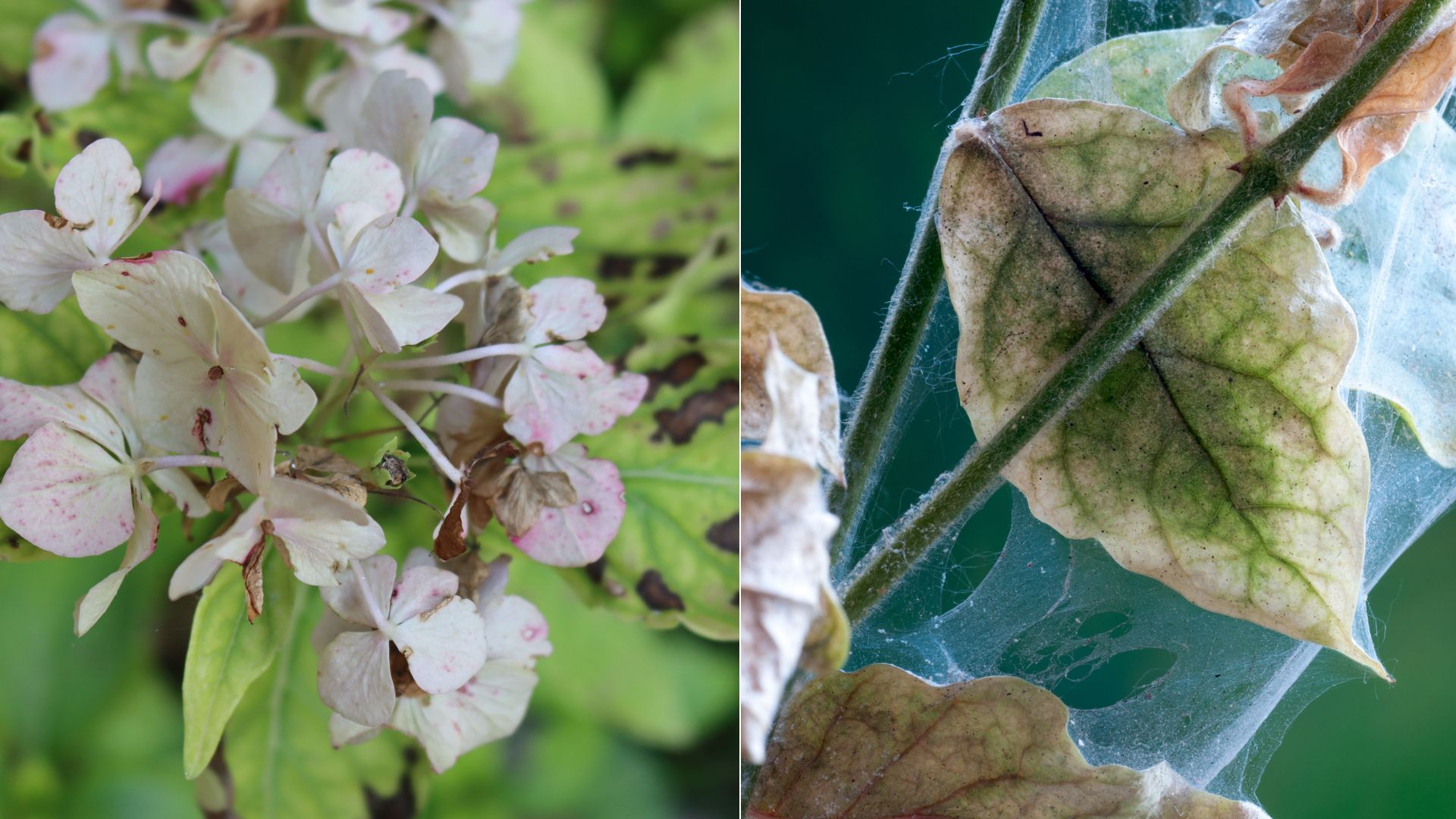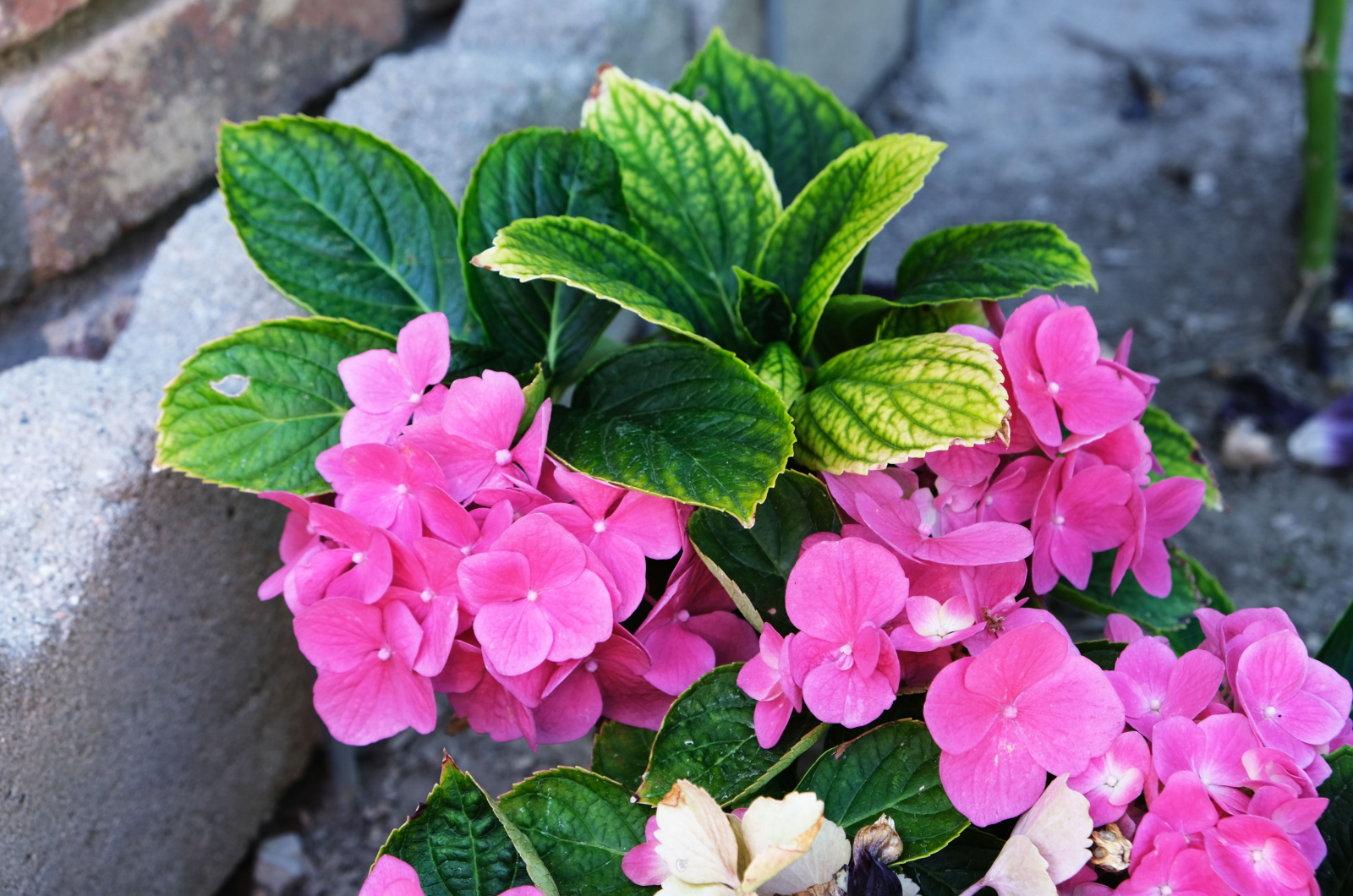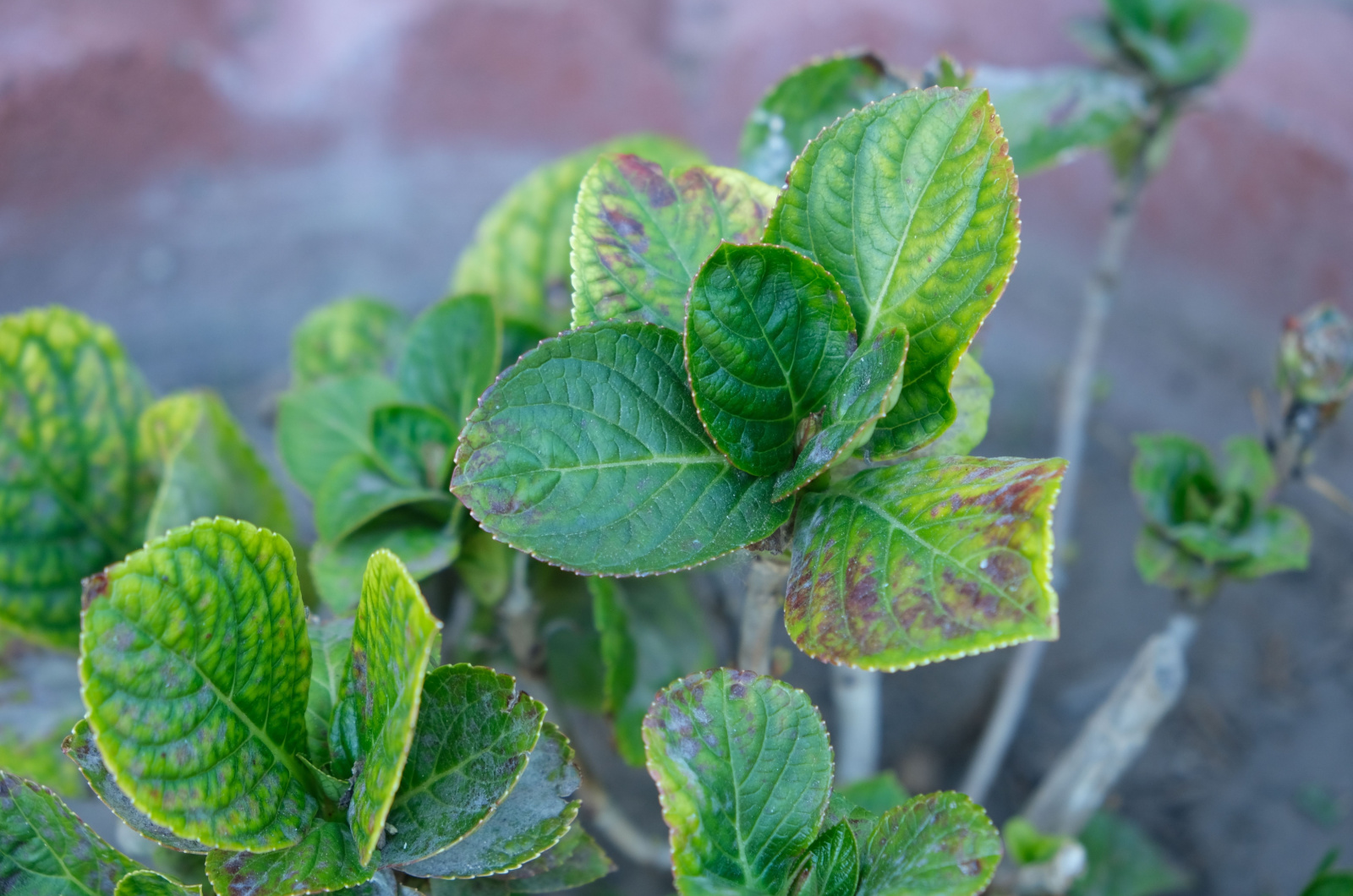Once hydrangeas start blooming, you don’t really notice any other plants in the garden! Their clustered tiny flowers come in multiple hues so there’s a hydrangea for every garden design.
No one likes to see their plants start displaying any changes, especially discoloration. If you notice yellowing, something is wrong and you should determine the cause and take the necessary measures as quickly as possible.
In this article, I’ll show you the three main reasons why your hydrangea leaves are turning yellow. You’ll also see how to fix the issue and some brilliant tips for keeping hydrangeas happy and healthy.
Let’s get started!
1. Nutrient Deficiency
The thing is that hydrangeas may display discoloration due to many reasons, such as insufficient light or temperature fluctuations. But if you notice yellowing, the first thing you should check for is nutrient deficiency.
Remember that a hydrangea can change its color depending on the pH of the soil. Well, almost every hydrangea parent tries this method and if done correctly, it gives amazing results.
But you know how it goes sometimes; we kinda get carried away and, in the case of hydrangea plants, we change pH levels incorrectly. If it goes over 6.4, our plant is at great risk of developing iron chlorosis as a result of iron deficiency. (1)
The more alkaline the soil is, the harder it will be for the plant to absorb the micronutrients it needs for healthy development. This especially relates to the inability to absorb enough iron and manganese, which results in the yellowing of the leaves.
But I have to mention that in this case, the green veins on the leaves do not change their color. Be careful with this because severe iron and manganese deficiency may result in complete wilting.
Lack of magnesium can also lead to discoloration, however, the pale foliage will develop red edges and most likely curl.
If these plants lack nitrogen, yellowing can also occur but in this case, you’ll also notice stunted growth. How to know if your hydrangeas lack iron or nitrogen? Iron deficiency mainly affects juvenile foliage whereas nitrogen deficiency attacks mature leaves.
The easiest way to fix this problem is by adding compost, sulfur, or well-rotted manure to the hydrangea soil. Additionally, you’ll need to fertilize your hydrangeas adequately, paying attention to the type of fertilizer and application frequency.
2. Pest Infestation
I’m sure you aren’t surprised to see pests on this list. I mean, these little nuisances cause so many problems in our gardens and I’m not sure if there’s a gardener that hasn’t faced infestation of their prized plants.
The first and the most common culprit is spider mites. These tiny but dangerous creatures may cause the leaves to display yellow spots, and the more severe the infestation is, the more noticeable the yellowing will be.
Spider mite infestations in hydrangeas mainly occur during hot weather between June and August.
You’ll also notice a silky web all over the foliage. Your hydrangea leaves will get a grayish bronze color and eventually start drooping.
But these changes aren’t only a consequence of spider mite infestation. Notorious aphids may also cause yellowing by sucking the sap from the foliage, making the plant weak.
Epsom salt can help you with aphids or you can use insecticidal soap or neem oil to eliminate both aphids and spider mites.
I don’t recommend using non-selective herbicides because, in this particular case, they can cause new foliage to turn yellow.
3. Diseases
The most dangerous cause of yellowing in hydrangeas that should worry you from the start is disease. These plants may suffer from both viral and fungal diseases.
If you waterlog the soil, especially in the case of potted hydrangeas, you increase the susceptibility to root rot, a very common plant disease that leads to leaf discoloration and even death.
Bear in mind that soils that don’t have good drainage will hold too much water and make root rot almost inevitable.
Another disease that occurs in these plants is chlorotic mottle virus infection (2). This typically affects plants during spring and fall, and the leaves first display yellow mottling before they get deformed entirely.
These diseases can affect all hydrangea types; the best way to treat fungal disease in these plants is to allow them to dry out entirely and then reduce the water amount to about 1 inch weekly.
Unfortunately, if your hydrangeas are affected by viral diseases, there’s no effective treatment so you’ll need to dispose of the plants.
Now that you know what causes leaf yellowing in hydrangeas, follow our guidelines to fix the issue. And remember, ensuring the best conditions for your hydrangea plants will help you avoid many problems and even if some occur, your plant will be stronger and fight them easily.
References
1. Utah State University. (n.d.-b). What is Iron Chlorosis and What Causes it? | Forestry | Extension. USU.
2. Bernardo, P., Barriball, K., Frey, T. S., Meulia, T., Wangai, A., Suresh, L. M., Heuchelin, S., Paul, P. A., Redinbaugh, M. G., & Ohlson, E. W. (2023). Transmission, localization, and infectivity of seedborne maize chlorotic mottle virus. PLOS ONE



